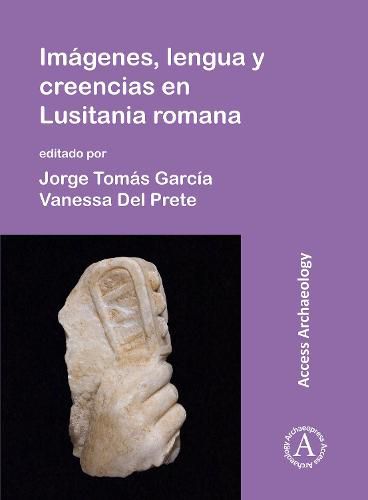Readings Newsletter
Become a Readings Member to make your shopping experience even easier.
Sign in or sign up for free!
You’re not far away from qualifying for FREE standard shipping within Australia
You’ve qualified for FREE standard shipping within Australia
The cart is loading…






This publication considers the visual, linguistic and religious culture of the Roman province of Lusitania. Roman influence was especially notable in religion and artistic manifestations. It was in the cities where the Lusitanians acquired Roman civilization: they learned Latin, the Frankish language of the peninsula; they were introduced to the Roman administration and religion; and in the third century, when Rome converted to Christianity, so did the Lusitanians. The Latin language was imposed as the official language, functioning as a binding factor and communication between different peoples. Being a fairly large area and lacking a unified state that promoted a particular language in administration or education, different languages
coexisted simultaneously in Hispania. The subjects continued to use their native languages, although official business was conducted in Latin or Greek. Indigenous religions persisted, although sacrifices were offered everywhere for the emperor and the gods of the Roman pantheon. Visual culture also reflected the hybrid character of provincial civilization. Images of a Roman style and subject matter circulated widely, and yet the craftsmen and consumers of the provinces maintained their own traditions, adopting Roman techniques and tastes as they pleased. The papers in this volume establish a broad and generous view of the relationship between images, languages and religious culture within Lusitanian society.
$9.00 standard shipping within Australia
FREE standard shipping within Australia for orders over $100.00
Express & International shipping calculated at checkout
This publication considers the visual, linguistic and religious culture of the Roman province of Lusitania. Roman influence was especially notable in religion and artistic manifestations. It was in the cities where the Lusitanians acquired Roman civilization: they learned Latin, the Frankish language of the peninsula; they were introduced to the Roman administration and religion; and in the third century, when Rome converted to Christianity, so did the Lusitanians. The Latin language was imposed as the official language, functioning as a binding factor and communication between different peoples. Being a fairly large area and lacking a unified state that promoted a particular language in administration or education, different languages
coexisted simultaneously in Hispania. The subjects continued to use their native languages, although official business was conducted in Latin or Greek. Indigenous religions persisted, although sacrifices were offered everywhere for the emperor and the gods of the Roman pantheon. Visual culture also reflected the hybrid character of provincial civilization. Images of a Roman style and subject matter circulated widely, and yet the craftsmen and consumers of the provinces maintained their own traditions, adopting Roman techniques and tastes as they pleased. The papers in this volume establish a broad and generous view of the relationship between images, languages and religious culture within Lusitanian society.